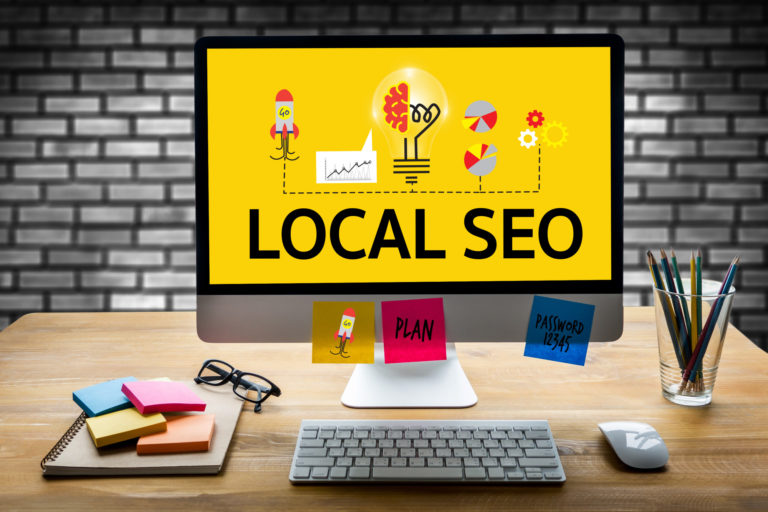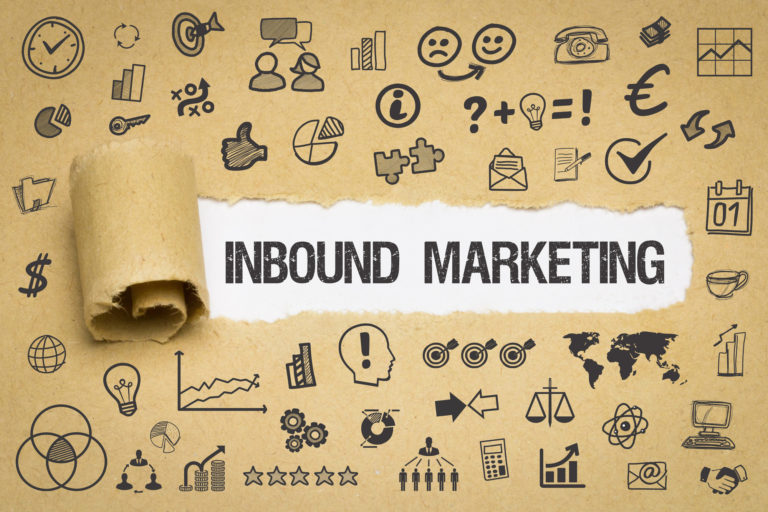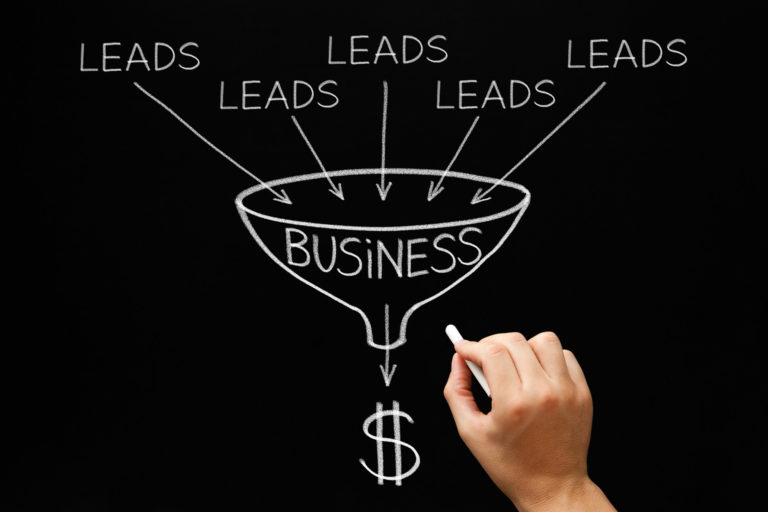10 Lead Generation Strategies for 2022
Are you looking for ways to generate more leads for your business? Leads are the lifeline of any business. Without them, your company will struggle to survive.
Unfortunately, lead generation can be pretty challenging, especially if you’re unsure where to start. According to a report, over 61% of marketers find the lead generation process challenging.
If you’re looking to generate more leads for your business, you’re in luck. This post will look at ten lead generation strategies that are guaranteed to help you get more leads. Even if you’re already generating a decent number of leads, these strategies will help you take your lead generation efforts to the next level.
So what are you waiting for? Read on to learn more:
1. Optimize Your Website’s Landing Page
One of the best ways to generate leads is by optimizing your website’s landing page. This means ensuring that your landing page is well-optimized for lead generation. You want to make sure that it’s easy for visitors to find what they’re looking for and that it encourages them to make a purchase.
Some tips for optimizing your website’s landing page include:
- Ensuring that your CTA buttons are easily visible
- Using clear and concise headlines to capture people’s attention
- Making use of persuasive copy
- Offering a freebie or discount in exchange for contact information
- Including testimonials from happy customers
Failure to optimize your landing page may result in a lead generation shortfall. Unfortunately, landing page optimization is one of the most overlooked lead generation tips. Not only does optimization help you increase your leads, but it also increases your customer conversion rate.
2. Generate Leads Through Social Media
Using social media can be a great way to generate leads for your business. In fact, over 91% of companies in the U.S. use social media to generate leads. You can use social media platforms like LinkedIn, Facebook, Instagram, TikTok, and Twitter to increase your visibility.
Some tips for generating leads through social media include:
- Creating targeted content that appeals to your target audience
- Making use of paid advertising opportunities
- Running contests and giveaways
- Engaging with followers and potential customers
- Answering direct messages as fast as possible
- Using trending hashtags in your niche when posting your content
- Including visual content in your posts
If you haven’t opened social media accounts for your business, you are missing out. You’re probably wasting opportunities to interact and engage with your target consumers.
When launching your social media marketing strategy, make sure you use the right platforms. You don’t have to join all the social platforms because they are trending. It’s advisable to find out which platform your target audience uses and start there.
3. Using Email Marketing to Generate Leads
Email marketing is a great way to generate leads for your business and increase profits. In fact, email marketing is 40 times more effective in lead generation than Twitter and Facebook. Some tips for generating business leads through email marketing include:
- Offering a freebie or discount in exchange for contact information
- Using persuasive copy in your emails
- Segmenting your list into different groups
- Including Calls to Action (CTAs) in your emails
- Personalizing your emails
- Using automated email marketing software
Email marketing is one of the most effective lead generation tactics. Start using email marketing today and see the difference it makes for your business.
4. Generating Leads Through Blogging
Incorporating blogging into your marketing strategy can help you generate business leads. You can take advantage of this by including Calls to Action (CTAs) in your blog posts. CTAs are links or buttons that encourage people to take action, such as subscribing to your email list or downloading an ebook.
Some tips for generating leads through blogging include:
- Starting a blog page on your website
- Including CTAs in your posts
- Making use of lead magnets
- Guest blogging for other websites
- Adding lead generation forms to your blog
- Creating valuable content that people will want to share
Blogging can be a great way to attract leads. However, you need to make sure that you create valuable content that people will want to consume and share. You also need to make sure that you include calls to action (CTAs) in your posts to direct people to take action.
If you’re not currently using blogging as a lead generation tactic, you should start today. It could make a big difference for your business.
5. Generate Leads through SEO
SEO, or search engine optimization, is one of the most effective lead generation tactics. However, most small businesses are not taking advantage of SEO marketing. In fact, over 70% of small businesses don’t have an SEO marketing strategy. Some tips for generating leads through SEO include:
- Optimizing your website for search engines
- Creating high-quality content
- Targeting long-tail keywords
- Participating in industry forums and Q&A sites
- Guest blogging for other websites
- Link building
Search engine optimization (SEO) is a great way to generate leads for your business. However, you need to make sure that you’re doing it correctly.
If you’re not familiar with SEO, it’s best to hire an expert to help you out. They can help you make your website search engine-friendly, write high-quality content, and target long-tail keywords.
Participating in industry forums and Q&A sites can also help you generate leads through SEO. You can answer questions and provide valuable information that people want to consume. When they’re done reading your answers, they’ll likely visit your website for more info.
6. Using Paid Advertising
Paid advertising is a great way to generate leads for your business. In fact, most companies today are using advertising effectively to increase their conversion rate and improve their sales. Some tips for using paid advertising to generate leads include:
- Using targeted keywords in your ads
- Creating compelling ad copy
- Optimizing your landing pages
- Running Facebook Ads
- Google AdWords
Paid advertising can be a great way to generate leads quickly. However, you need to ensure that you target the right people with your ads and optimize your landing pages correctly. If not, you could lose money rather than make it.
Try out different forms of paid advertising and see which one works best for you.
7. Networking Events
Have you been going to business-related networking events? Most people don’t know those networking events are a great way to generate business leads.
Networking events can be a great way to connect with potential customers and clients. However, you need to make sure that you’re prepared before attending an event. Make sure you have plenty of business cards and know which people you want to connect with.
You should also prepare a 30-second elevator pitch about your business. This will help you quickly introduce yourself and your company to others.
Attending industry conferences can be a great way to connect with potential customers and clients. You’ll have the opportunity to meet other professionals in your field and learn about the latest lead generation trends. Conference organizers often offer discounted rates for early bird registration, so make sure you sign up early.
Participating in online and offline networking groups can also help you generate leads through networking events. This type of group is typically moderated by an expert in the field, which means you’ll get valuable information and advice.
Joining a local Chamber of Commerce is another great way to network with potential customers and clients.
8. Use Data-Driven Content Marketing
Did you know that you can use content marketing to generate leads for your business? In fact, most B2B marketers use this strategy to increase leads and conversion rates.
Most businesses already have some type of data that they can use to create valuable content. However, you need to make sure that you’re using it correctly. Make sure you understand your buyer personas and develop a content marketing strategy. This will help you produce the right type of content for your audience.
Data-driven content marketing involves collecting customer and industry data and using it to create marketing content. Some tips for using data-driven content marketing include:
- Creating buyer personas
- Developing a content strategy
- Creating gated content
- Producing white papers and eBooks
- Creating infographics and videos
- Using social media as a research tool
Creating gated content is another excellent way to use data-driven content marketing to generate leads. Gated content is content that’s hidden behind a form or survey. This lets you get contact information from people who might be customers in exchange for useful information.
Producing white papers and eBooks can also help you generate leads through data-driven content marketing. Businesses often use these types of long-form content as lead magnets. Offer them in exchange for someone’s contact information, and you’ll be able to increase your lead count significantly.
Social media can also be used as a research tool for data-driven content marketing. Use it to find out what your target audience is interested in and then create content around those topics. Through data-driven content marketing, you’ll be able to increase leads and conversions through the right tactics.
9. Define Your Target Audience
It’s essential to understand your target audience and what they want. This will help you determine which lead generation strategies work best for you.
One way to define your target audience is by creating buyer personas. Buyer personas are fictional, generalized representations of your ideal customer. By understanding who your buyers are, you’ll be able to create content and marketing campaigns that appeal specifically to them.
Another way to define your target audience is through market segmentation. Segmenting your market allows you to group potential customers based on their needs and wants. This makes it easier to develop targeted marketing campaigns that resonate with them.
Once you’ve defined your target audience, it’s essential to understand their needs and wants. You can do this by conducting market research. Use surveys, interviews, and focus groups to understand what your target audience is looking for.
Once you understand their needs and wants, you’ll be able to develop lead generation strategies that appeal to them specifically. It will also be easier to tailor your marketing content to meet the needs of your customers.
10. Share Valuable Content
To generate leads, you need to share valuable content with your audience. This will help you build trust and credibility with them.
When you share valuable content, potential customers will be more likely to trust you and your brand. They’ll also be more likely to convert when they finally decide to do business with you.
There are a few things you can do to make sure your content is valuable. For example, creating relevant and engaging content is essential to capturing your clients’ attention.
When creating content, make sure it’s relevant to your target audience. If it’s not relevant, they won’t bother reading it. However, if the content is relevant and exciting, they’ll be more likely to engage with it.
It’s also essential to make your content engaging. If it’s not interesting, people won’t stick around long enough to learn what you have to offer. However, if the content is well-written and engaging, they’ll be more likely to read it all the way through.
Finally, make sure your content is valuable. This means providing valuable information that people can use in their everyday lives. Potential customers will see you as an authority in your field when you do this. And if they regard you as an authority figure, they are more likely to convert into leads.
Follow the Above Lead Generation Strategies
Lead generation takes time and effort. However, it’s worth it in the end. If you’re looking for ways to increase your lead count, the above eleven lead generation strategies will help. Use them wisely, and you’ll see a significant increase in leads and conversions.
Are you looking to create a professional, high-quality website to help you increase your sales? Contact us at Fishhook Marketing, and we will help you create a website that turns your users into leads.








